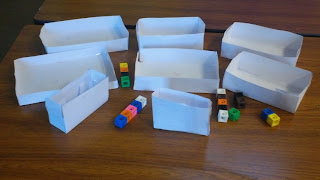And yet, much as Gove provokes an unprecedented level of ire
and exasperation from teachers, he himself is not really the problem.

Yes that’s right.
Gove isn’t the problem.
The system is.
You see, we have a system in which the secretary of state for
education has almost unbridled power over our schools. On the 29th
of September, mere weeks before our year 11 students were due to take their
GCSE maths exam in early November, Gove sent out a tweet (no letter, or email,
just a tweet) saying that exam re-sit results would no longer count towards
league tables. This edict was effective immediately.
“Bravo!” I hear many people cry. “Teenagers have it easy,
they shouldn’t be allowed to re-sit their exams and schools shouldn’t encourage
it.”
The awkward thing is, Gove himself has promised legislation
that will mean students HAVE TO re-sit GCSE maths and English if they don’t get
a C. So when he labels re-sitting “cheating”, he himself is enshrining cheating
in legislation, making it mandatory for a significant proportion of teenagers.
Whatever the rights and wrongs of entering students in for November
exams, this particular tweet at the end of September encapsulated the crux of
the problem with our education system. The education secretary had an idea, he
implemented it immediately, he scored political points for himself, and he generated
agonising and immediate problems for hundereds of teachers up and down the
country, with potentialy disastrous results for students.
In our school, we waited a few days, hoping for a U turn, thinking
surely, surely he can’t jeopardise our students’ results like this. But with no
U turn seeming likely, we called an emergency meeting before school to decide
whether or not to pull students out of the exam. We had to balance what was
best for the individual students with what was best for the whole school (and
the thousand or so other students that attend). We decided to keep most of the
students in. They have been working hard since the beginning of September and they
wanted to do the exam. For our part, we
wanted to shelter them from the political storm raging above their young heads.
Of course, this debacle should never have happened. We cannot
function well in a system where the rules constantly change, where we don’t
even know what is on the curriculum, where there is no clear and consistent
leadership. We cannot function in a system where things can change at the whim
of the Education Secretary. It has to stop.
These are the key changes I feel that we need at a political
level:
The
secretary of state for education should have no role in deciding the national
curriculum. This should be discussed and decided by experts, including
teachers, academics and representatives from businesses and employers. No
single person should be able to stamp their individual preferences all over the
curriculum.
The
secretary of state should not be able to announce changes that impact on the
current academic year. I do not say this because I am opposed to change; indeed
I think it is vital. But if new policies could only be implemented in the next
academic year it would give teachers more time to plan, it would make
politicians think more carefully about what they are doing, and the resulting
changes would be more effective and more successful.
Teachers
need a professional body, which should be consulted over every major change. Currently
we only have unions. Their job is limited to pay, pensions and working
conditions, but I believe that the majority of teachers are more bothered about
the negative impact that politicians have on the curriculum. We need a
professional body to stand up for teachers and students over issues such as
exams and the curriculum.
So there are my proposals. I’m not attacking Gove as an
individual, I’m attacking a system that allows him so much power. His “crusade”
mentality has caused teachers more problems than any other education secretary
in recent years, but it is his position, rather than the man himself, that
poses the greatest threat.
I have titled my blog post “speaking truth to power”. I don’t
have a lot of power. But I am an intelligent, thoughtful person who cares
passionately about the young people she teaches. I hope somebody listens.























